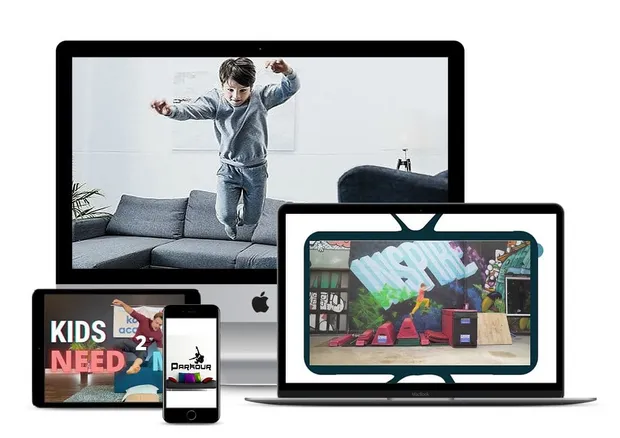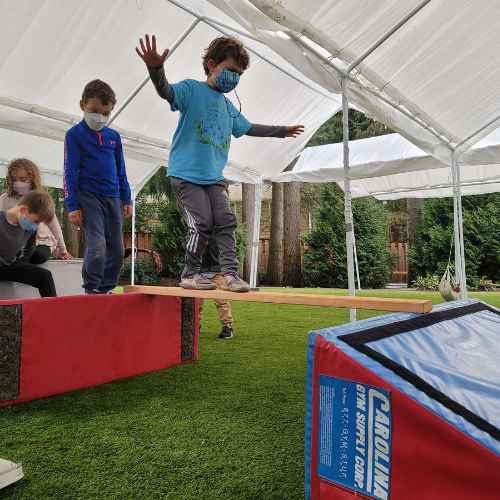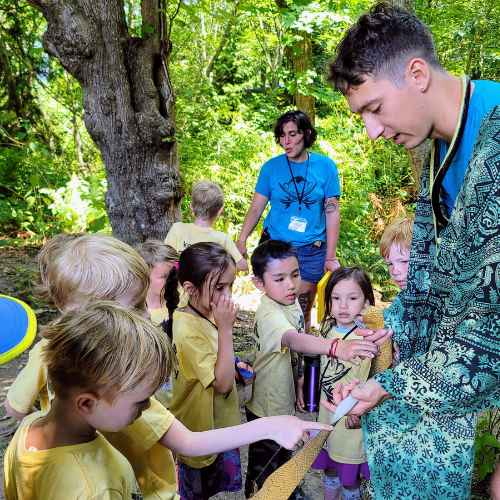
Sharing is a fundamental life skill that helps children develop strong relationships and grow into compassionate, thoughtful adults. Whether it’s sharing toys in the classroom or helping a sibling with chores at home, learning the value of giving and sharing with others shapes a child’s ability to connect with others.
Why Is Sharing Important for Kids?
Teaching children about sharing is more than a social nicety; it’s a crucial step in helping them understand their place in the community and develop vital skills. Children who learn to share grow into empathetic, cooperative adults capable of building strong bonds. Here’s how sharing contributes to their overall growth:
Builds Social Skills + Friendships
Sharing with others lays the foundation for healthy social interactions. When children share toys or materials, they learn to navigate social dynamics, such as taking turns, compromising, and resolving conflicts. These experiences not only build social skills but also help children form and maintain meaningful friendships.
By encouraging children to share, you’re helping them see the value of collaboration. They begin to understand that relationships thrive on mutual give-and-take, creating a strong basis for lifelong connections.
Teaches Empathy & the Needs of Others
When a child offers a friend a piece of their favorite snack or lets someone borrow their crayons, they’re engaging in an act of empathy. Sharing requires children to consider how others feel, promoting a deeper understanding of the needs of others.
This awareness cultivates kindness and reduces selfish behavior, teaching children that their actions can positively impact those around them. Over time, this creates a sense of responsibility to contribute to the well-being of their community.
Develops Personal Growth
Sharing challenges children to step outside their comfort zones and think beyond their immediate desires. It fosters self-discipline, patience, and resilience as they learn to navigate moments of frustration or disappointment.
As children grow, the knowledge of sharing instills confidence in their ability to engage with others and strengthens their moral character. They develop a sense of fairness and equity that extends into other areas of their lives, from teamwork in school to acts of service in adulthood.
Strategies for Teaching Sharing
Teaching children how to share requires intentionality and practice. Here are some effective strategies to encourage sharing while keeping the experience enjoyable and stress-free:
Practice Taking Turns
Taking turns is one of the easiest ways to introduce the concept of sharing. Whether you’re playing a board game or passing around a toy, structured turn-taking teaches children that everyone gets a fair chance.
Start by modeling this behavior yourself. For example, you can say, “It’s your turn to play with the blocks now, and then it will be Jamie’s turn.” Consistent practice reinforces patience and helps children feel secure that their needs will also be met.
Role-Playing Scenarios
Role-playing provides a safe space for children to explore sharing without the pressure of real-life consequences. Create simple scenarios where they can practice sharing and discuss how it feels.
For example, pretend one child wants to borrow a toy. Ask, “How would you feel if someone shared their toy with you?” and guide them in responding with kindness. This helps them understand the emotional impact of their actions and reinforces the idea of sharing as a positive experience.
Setting Clear Expectations
Children thrive when they know what’s expected of them. Clearly explain why sharing with others is important and what behaviors you hope to see. Use phrases like, “In our home, we share so everyone feels included,” or, “At school, we take turns to be fair.”
Consistency is key. Praise them when they meet these expectations, reinforcing that their efforts contribute to a sense of happiness for everyone involved.
Fun Classroom Activities to Promote Sharing
Classroom activities are an excellent way to introduce the concept of sharing in a fun, engaging environment. These activities not only teach valuable lessons but also foster a strong sense of community among children.
Sharing Circles
Sharing circles encourage children to openly discuss and exchange items or ideas. For example, children can bring a favorite book or toy to share with the group, explaining why it’s special to them.
This activity helps children develop social skills by learning to listen, express themselves, and appreciate the contributions of others. It also creates a collaborative environment where sharing feels natural and rewarding.
Fundraising Projects
Engaging children in fundraising projects teaches them the joy of giving back. Organize activities like a bake sale or a charity drive where children contribute their time, effort, or belongings to support a cause.
These experiences show children that sharing extends beyond personal interactions—it’s about making a difference in their community. They learn that small acts of kindness can have a big impact, reinforcing the knowledge of sharing.
Art Projects
Collaborative art projects, such as creating a mural or group collage, encourage children to share materials like paint, paper, and markers.
This activity not only fosters creativity but also teaches children to work together and appreciate each other’s contributions. By sharing resources, they learn to respect others and find joy in collective accomplishments.
How Parents Can Encourage Giving and Sharing
Parents play a vital role in nurturing a child’s ability to share. Your everyday actions and attitudes can shape how your child views the idea of sharing. Here are some ways you can encourage this behavior at home:
Be a Role Model & Lead by Example
Children learn by observing you. When you share with others—whether it’s lending a neighbor a tool or helping a friend—you’re demonstrating the importance of generosity.
Involve your child in these acts of giving. For instance, say, “Let’s bake some cookies to share with Grandma,” or, “Would you like to help me donate these clothes?” These moments teach them that sharing creates joy and strengthens relationships.
Praise Efforts
Acknowledging your child’s attempts to share reinforces their positive behavior. Be specific with your praise, such as, “I loved how you let your friend play with your toy car. That was very kind of you.”
This feedback helps children associate sharing with feelings of pride and accomplishment, encouraging them to continue.
Read Books About Sharing
Books are a wonderful way to introduce the concept of sharing in an engaging and relatable way. Stories like “The Rainbow Fish” or “Should I Share My Ice Cream?” illustrate the benefits of sharing through memorable characters and situations.
Reading together also provides opportunities to discuss the themes of the book and connect them to real-life experiences, deepening your child’s understanding of the idea of sharing.
Teaching children the value of sharing with others is an essential part of their journey toward becoming empathetic, socially adept individuals. From practicing turn-taking to engaging in fundraising projects, there are countless ways to make learning about sharing both fun and meaningful.
As a parent or teacher, your guidance plays a pivotal role in fostering a sense of happiness, connection, and personal growth in children. By modeling generosity, setting clear expectations, and celebrating their efforts, you can help them embrace the joy of giving and build stronger relationships with those around them.
Contact Kong Academy to learn more about how to inspire generosity and cultivate lifelong skills for your children or students.
GET Access to the ULTIMATE PLAY DATE PACKAGE (Value: $49) for FREE!


7-Day Crystal Shard Adventure
Unleash your child’s potential with our 7-day crystal shard movement adventure!




